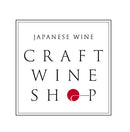What is Japanese wine?
It is different from overseas wines, as well as from "domestically produced wine" or "domestic wine".
By law, only wine made using grapes harvested domestically and produced within Japan can be called "Japanese wine".
In other words, Japanese wine is wine that allows you to purely enjoy the flavors derived from the climate and natural features of various regions in Japan.
A major characteristic of Japanese wine is diversity.
Currently, grape cultivation for wine is carried out in almost all prefectures, but the northernmost limit is Nayoro City in Hokkaido at latitude 44.1 degrees, and the southernmost limit is Onna Village in Okinawa Prefecture at 26.3 degrees. The difference is about 18 degrees.
In comparison, the latitude difference between the northern limit Champagne and the southern limit Corsica Island in France’s wine regions is about 6 degrees, showing how far apart north to south these areas are.
The terrain also varies, including basins and alluvial fans, mountainous areas over 900m in elevation, and sandy coastal areas, with grape cultivation taking place in diverse environments.
There are also various grape varieties. Koshu and Muscat Bailey A are representative native Japanese varieties, but in addition, European varieties such as Chardonnay and Pinot Noir, wild native varieties, and many hybrids and crosses of these are used to make wine.
This diversity is very similar to Japan’s food culture, which enjoys a blend of Japanese and Western styles.
Japanese wine as a local specialty.
Among regions producing wine that takes advantage of local characteristics, some have begun to receive GI (Geographical Indication) designation.
When it comes to wine, many may be familiar with AOC or DOC, but Japan is also developing its GI system.
Requirements include clear characteristics of the production area and management to maintain those characteristics, and currently five prefectures—Yamanashi, Yamagata, Hokkaido, Osaka, and Nagano—have been designated.
For example, GI white wine from Hokkaido is characterized by aromas of green apple and citrus fruits and rich acidity, and the GI requirements specify varieties such as Kerner and Niagara, as well as set standards for total acidity.
It is a wine that reflects the cool climate of Hokkaido.
Of course, local specialties in Japan are not limited to wine.
We can enjoy seasonal ingredients and delicious foods from various regions throughout the year.
Pairing Japanese wine from the same region with these foods to enjoy the terroir at the dining table is a very familiar and relatively easy happiness to realize.
Japanese wine is an item that accompanies our daily lives in various ways and enriches our everyday living.
Now, what kind of dining table shall we have tonight?




